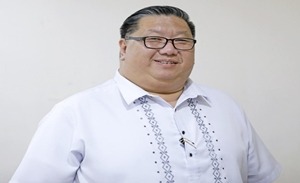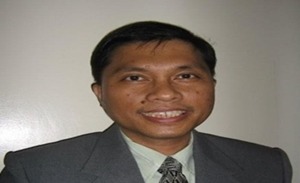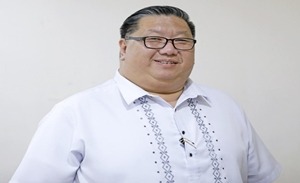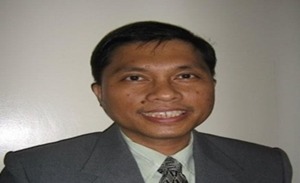FRESH VIEWPOINTS: A NEW PERSPECTIVE
By Brian James Lu
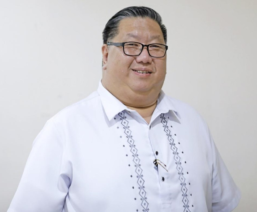
From April 28 to May 5, 2025, the Philippines joins the global community in observing the Global Action Week for Education (GAWE) 2025. With the theme “Education Saves Lives: Protect Education in Emergencies,” this year’s celebration highlights the urgent need to ensure access to education even in times of crisis.
The Inter-Agency Network for Education in Emergencies (INEE, 2018) defines “Education in Emergencies” (EiE) as the provision of quality learning opportunities for individuals of all ages during crises. This includes early childhood care and development, primary and secondary education, as well as non-formal, technical, vocational, and adult learning. Education in emergencies not only supports cognitive development—it also offers physical and psychosocial protection that can help sustain and even save lives. It becomes essential in contexts such as armed conflict, violence, forced displacement, natural disasters, and public health emergencies.
The theme resonates strongly with the Philippine experience. The Philippines, one of the world’s most disaster-prone countries, regularly experiences both natural and human-induced emergencies that severely disrupt education. Typhoons, volcanic eruptions, earthquakes, armed conflict, and, more recently, extreme heatwaves and widespread flooding have led to repeated school closures and prolonged interruptions in learning. These challenges threaten not only the academic progress of learners but also their overall well-being and long-term development.
Perhaps the most striking reminder of the vulnerability of Filipino children to such disruptions was Super Typhoon Yolanda (Haiyan), the strongest tropical cyclone ever recorded at landfall, which devastated parts of the Visayas region on Nov. 8, 2013. The typhoon claimed over 6,000 lives, displaced millions, and destroyed thousands of schools, leaving students without classrooms, learning materials, or access to psychosocial support for months—if not years—after the disaster.
These recurring emergencies emphasize the urgency of building resilient education systems that can withstand crises and continue to serve learners even in the harshest conditions. Education must not be the first casualty in emergencies—it must be protected and prioritized as a fundamental right and a critical tool for recovery, hope, and future development.
To emphasize the need to protect education in emergencies more, the World Bank stated that between 2021 and 2023, around 4,000 schools were damaged due to various disasters, resulting in the disruption of learning for two million children. Approximately 78 percent of public schools and 96 percent of students in the Philippines face multiple hazards, according to the report.
PART2
The Second Congressional Commission on Education (EDCOM 2) has reported that typhoons and other natural disasters frequently disrupt classes across the country, resulting in substantial losses in instructional time. As a striking example, the commission cited a school in the Cordillera Administrative Region (CAR) that lost 48 percent of its school days in 2024 due to weather-related disruptions.
These disruptions not only hinder academic progress but also impact students’ mental health and well-being. For instance, the combination of the Covid-19 pandemic and natural disasters has caused stress and anxiety among students adjusting to distance education and coping with technological challenges.
Civil society organizations (CSOs) in the Philippines play a crucial role in promoting resilient, inclusive, and rights-based education systems. Among them, the Civil Society Network for Education Reforms (E-Net Philippines) stands out for its commitment to ensuring that every child has access to quality education—especially during times of crisis. E-Net is a national coalition of CSOs actively engaged in policy advocacy and multi-sectoral partnerships aimed at driving meaningful education reforms.
These organizations work in close collaboration with government agencies, local communities, and international partners to address the complex challenges posed by emergencies. Their initiatives include the distribution of emergency education kits, the establishment of temporary learning spaces, and the training of teachers to effectively manage and respond to crisis situations—all essential measures to keep learning going amid disruptions.
One of E-Net Philippines’ flagship initiatives is Kalambag—short for KALAMpag at AmBAG ng Kabataan. Launched during the pandemic in partnership with Education Out Loud (EOL), Kalambag is a Facebook Live program that emerged in response to the call of children and youth for a platform where they could express themselves, be heard, and remain engaged during those challenging times.
This youth-led program plays a key role in advancing the agenda of Education in Emergencies by empowering young people to raise their voices and participate in shaping responsive and inclusive education policies. Through youth dialogues, school-based engagements, and community-led activities, Kalambag provides platforms for learners to share their experiences, articulate their needs, and propose solutions to strengthen the resilience of the education system in the face of disasters, conflict, or health emergencies.
By placing youth at the center of the conversation, Kalambag ensures that those most affected by educational disruptions are heard and included in policy-making processes. The program exemplifies the power of youth participation in pushing for education strategies that are not only inclusive and participatory but also better equipped to respond to the realities of emergencies in the Philippines.
PART 3
The Department of Education’s Disaster Risk Reduction and Management Service (DepEd-DRRMS) plays a vital role in sustaining education during crises through its Education in Emergencies program. DRRMS leads the department’s initiatives in preparing for, responding to, and recovering from both natural and man-made disasters that disrupt learning across the country. Its responsibilities include pre-positioning emergency education supplies, conducting rapid damage assessments, and implementing alternative learning modalities—such as modular and blended learning—when in-person classes are suspended due to emergencies.
In addition to ensuring academic continuity, DepEd-DRRMS provides psychosocial support to students, teachers, and staff affected by disasters. It also works closely with local government units and humanitarian partners to set up temporary learning spaces when schools are damaged or repurposed as evacuation centers.
Moreover, the service supports the integration of disaster preparedness and climate resilience into the basic education curriculum, fostering a culture of safety, awareness, and adaptability among learners.
Through these coordinated and proactive measures, DepEd-DRRMS ensures that education is not sidelined during emergencies. Instead, schools become more than just centers of learning—they serve as safe spaces that uphold the rights, dignity, and well-being of children during times of crisis.
GAWE 2025 serves as a poignant reminder of the indispensable role education plays in children’s lives, particularly during emergencies. Education offers stability, protection, and a sense of normalcy, which are crucial for children’s development and prospects.
As the Philippines continues to confront various challenges, from natural disasters to public health crises, it is imperative to prioritize education in emergency preparedness and response plans. Investing in resilient infrastructure, supporting educators, and ensuring access to learning materials can mitigate the adverse effects of emergencies on education.
With collective action and sustained commitment, we can ensure that every Filipino child’s right to education is upheld—even in times of adversity.

